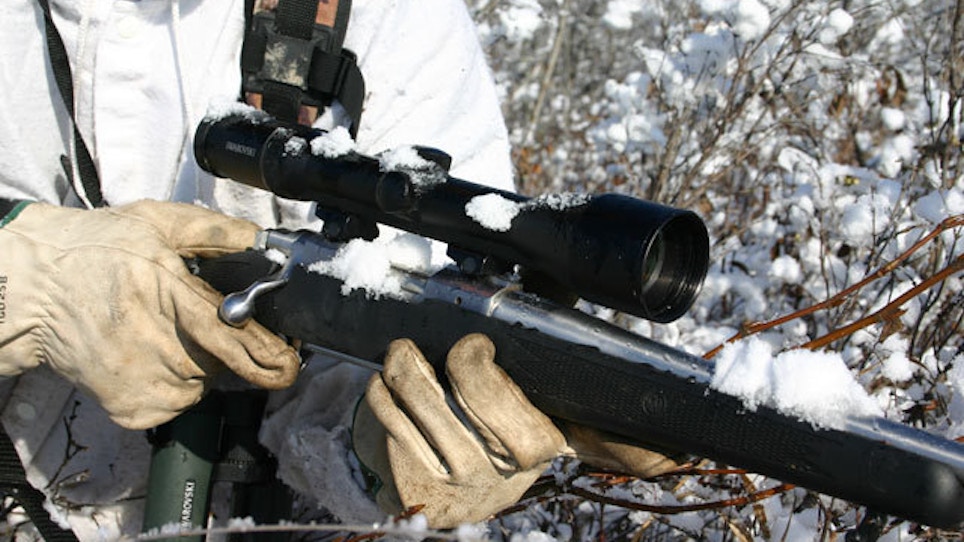Inclement weather and subzero temperatures common throughout the whitetail’s Northern range can cause a host of problems regarding the operation and care of hunting optics. This is especially critical when hunting in remote locations. If optics fail, your hunt could very well be over, simple as that. Most will agree that when preparing to hunt in northern or mountainous climes, hunters should buy the best optics, including riflescope, binoculars and spotting scope, they can afford. And even then, they need to take special care in the field to ensure they keep working properly.
Tom Hogan, technical training coordinator for Swarovski Optik, says good-quality optics shouldn’t fog up internally (as long as the nitrogen remains inside). If you have internal fogging in an optical instrument, it should go back to the manufacturer for repurging and possibly new seals. “I run into more outside fogging issues, especially concerning ocular lenses on binoculars,” he said. “If you take a binocular that has been sitting in the truck all night in cold weather and place it up to your 98.6-degree eyeballs the next morning, there’s a chance the eye lenses will fog up. Eye relief on binoculars usually range from about 12mm to 23mm (about ½-inch to an inch). Choose binoculars with a generous amount of eye relief that will keep them farther away from your eyes if you know you’re going to be hunting in extreme cold. Another external fogging problem can happen from inadvertently breathing on cold lenses. Try to keep your binoculars under your coat but still easily accessible to take advantage of your body heat. There are anti-fogging products on the market you can utilize. While these products might not completely prevent fogging, the moisture disappears very rapidly. One of these products I’ve used that works pretty well is called Parker’s Perfect.”
Hogan recommendsusing scope covers in the field when walking through snow-covered brush, especially on a riflescope — preferably flip-ups or something that can be removed relatively quickly. “Ocular covers or rain guards are of great importance to keep water/snow off the eye lenses on binoculars,” he said. “Water on the eye lenses hinders vision, not to mention the possibility of the water freezing as temperatures dip. Make sure your optics are waterproof for adverse conditions. Most manufacturers make waterproof optics now, but some are just a little more waterproof than others. Modern Swarovski riflescopes are waterproof even with the turret caps off. Make sure power rings on scopes or focus wheels on binoculars turn easily enough in very cold temperatures. There are greases that are used on internal mechanical parts that need lubrication. Some greases can make movement of moving parts very sluggish. Swarovski’s functional temperatures are minus 4 degrees for spotting scopes and riflescopes and minus 13 degrees for binoculars. The optics will work at temperatures much below this, but these are the temperatures at which the grease will start to thicken up.”






